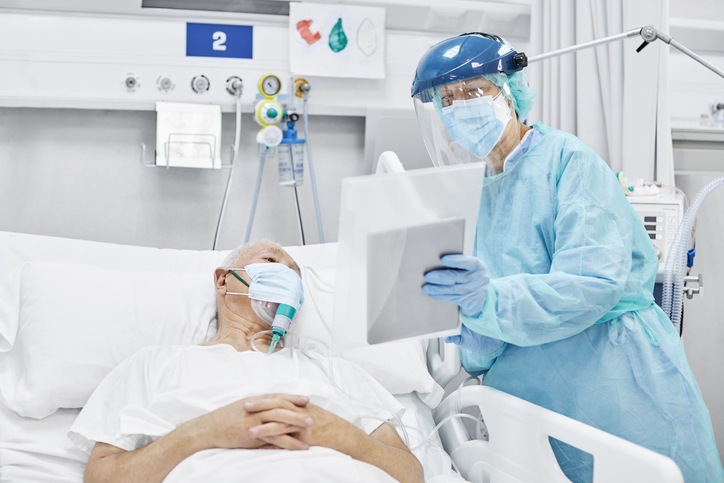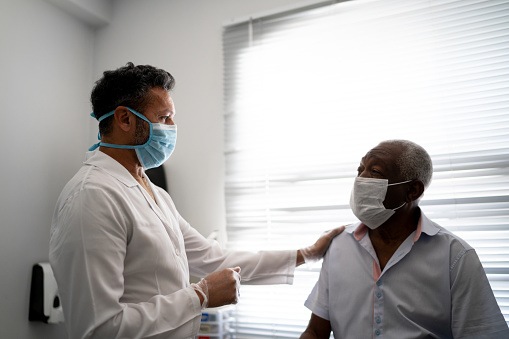
Researchers assessed the use of a next-generation sequencing (NGS)-based minimal residual disease (MRD) assay for early detection of molecular relapse in diffuse large B-cell lymphoma (DLBCL) and found that it failed to consistently identify patients at risk of recurrence prior to clinical evidence of relapse. However, patients who achieved positron emission tomography (PET)-negative complete remission (CR) have “excellent” outcomes, according to the results that were presented at the 2020 ASH Annual Meeting.
The multicenter, prospective study included 401 evaluable patients (median age, 62 years; range, 19-95 years; 58% were male) with DLBCL or high-grade B-cell lymphoma from five cancer centers who received anthracycline-containing chemotherapy. Among patients who achieved a PET-negative CR, serial peripheral blood samples were obtained every three months and computed tomography (CT) scans were completed every six months for two years following treatment. Most patients (61%) had advanced-stage disease.
Researchers used the clonoSEQ® NGS MRD assay to identify and track rearrangements of IgH, V-J, D-J, and IgK/L loci and translocations in BCL1/2-IgH. MRD positivity was defined as any detectable rearrangement.
Patients received treatment with R-CHOP (rituximab, cyclophosphamide, doxorubicin, vincristine, and prednisone; 36%), R-EPOCH (rituximab, etoposide, prednisone, vincristine, cyclophosphamide, and doxorubicin; 20%), clinical trial regimens (15%), combined modality therapy (R-CHOP plus radiotherapy; 10%), and other R-CHOP variations (19%).
Forty-four patients relapsed as of June 1, 2020, and tumor-specific clonotypes were identified in 39 patients (91%). In nearly half of patients (47%; n=18/38), clinical relapse was detected using surveillance imaging alone in an otherwise asymptomatic patient with a normal physical exam and laboratory evaluation, “supporting the value of CT surveillance imaging in DLBCL, particularly for patients with advanced-stage or high-risk disease,” the researchers noted. Clinical relapse was detected by clinical symptoms alone in 11% of patients (n=4/28) and by imaging and clinical symptoms and/or evaluation by an oncologist in 42% of patients (n=16/38). Data were missing for six patients.
After a median follow-up of 2.2 years, two-year progression-free survival (PFS) was 88.1% (95% confidence interval, 84.8-91.4). Worse PFS was associated with advanced age, advanced disease stage, and poor-risk revised International Prognostic Index score.
In 56% of patients (n=22/39), the MRD assay was positive at or before clinical relapse. In 38% (n=15/39), the MRD assay was positive above the limit of detection at or prior to clinical relapse, with only 10 relapses detected more than three months prior to relapse, “reflecting the poor clinical sensitivity of the assay,” the researchers noted. The NGS MRD assay was more sensitive in the acellular (plasma cell-free DNA) than in the cellular (circulating leukocytes) compartment.
Reference
Kumar A, Westin J, Schuster SJ, et al. Interim Analysis from a Prospective Multicenter Study of Next-Generation Sequencing Minimal Residual Disease Assessment and CT Monitoring for Surveillance after Frontline Treatment in Diffuse Large B-Cell Lymphoma. Abstract 2097. Presented at the 62nd American Society of Hematology Annual Meeting & Exposition, December 2-11, 2020.







 © 2025 Mashup Media, LLC, a Formedics Property. All Rights Reserved.
© 2025 Mashup Media, LLC, a Formedics Property. All Rights Reserved.